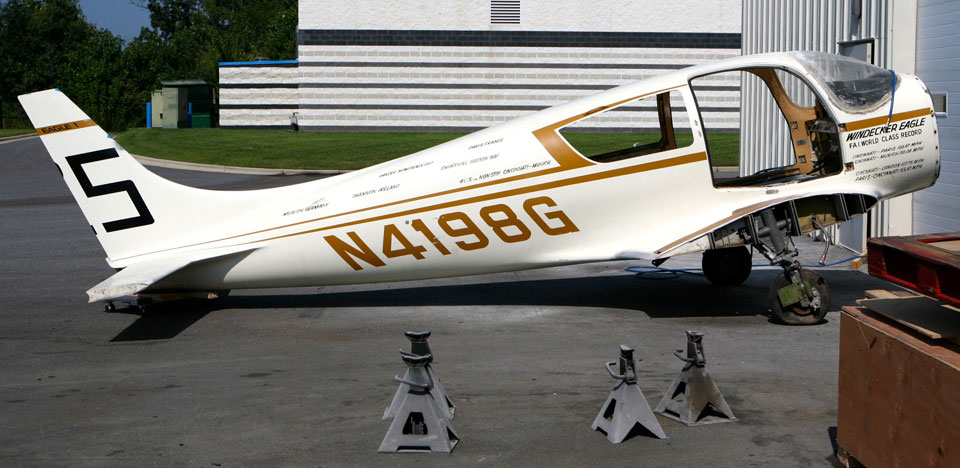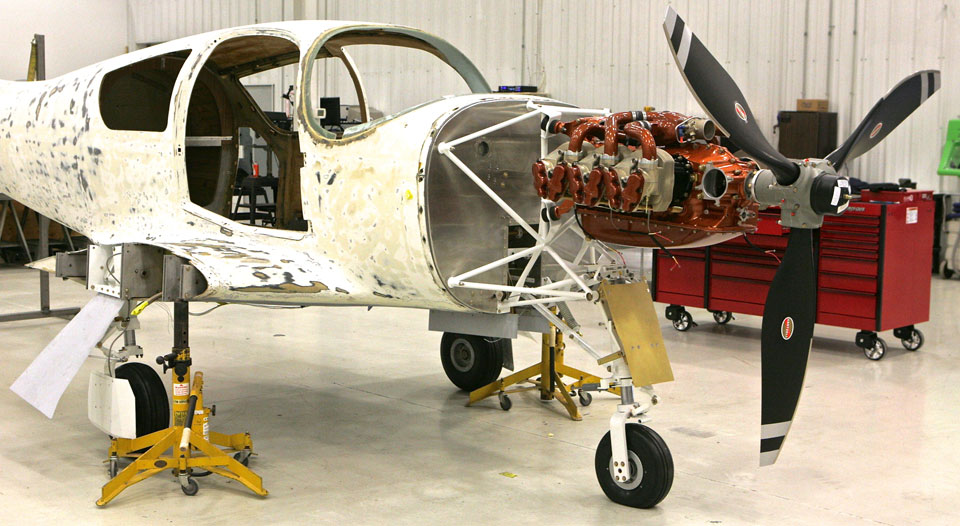Windecker Eagle Restoration Nears Completion
April 9, 2015 - The original Windecker Eagle, the first composite airplane certificated by the FAA, is currently undergoing a full restoration that could be completed this summer. It will be the only airworthy example of its kind. Reportedly, it was also the first aircraft of any kind certificated under Part 23 rules.
Designed and developed in the 1960s by husband and wife dentists Leo and Fairfax Windecker, the Eagle first flew in 1967 and was certificated two years later – in December 1969 - at a cost of $20 million. Two Eagle prototypes and six examples later, the company ran out of money and shut down its production line.
Commissioned by Chinese entrepreneur Wei Hang, the restoration team, headed by Don Atchison, EAA 1167439, and led by Mike Moore, EAA 699101, and Dennis Hallman, EAA 340710, was able to purchase two copies of the Eagle that had been outdoors for many years and left in storage for decades.
“Had it not been for a special UV coating on the fiberglass, the structure would have dissolved a long time ago,” Atchison said. “The fiberglass has actually held up much better than the metal components in the airframe.”
Most everything firewall forward has been replaced, while the landing gear, flight controls and mechanical, electrical, hydraulic, and fuel systems have been refurbished to better-than-new condition, he added. The windows, windshield, and interior will be completely new, plus a number of upgrades are planned for the panel.
Thanks to its smooth surface and contours, the Eagle outran the Bonanza, the Cessna 210, and the Bellanca Viking in side-by-side flights, even though the cabin of the Eagle is 51 inches wide. A copy of the aircraft was used in early research by the military, leading to the development of composite-based stealth technology.
“Mr. Hang was attracted to the Windecker Eagle because of its historical significance, rarity, style, and performance,” Atchison said. “He will own a truly unique aircraft when it’s finished and flying again.”
Atchison is currently scheduled to conduct a press event about the Windecker Eagle project at EAA AirVenture Oshkosh at 11:15 a.m. on opening day, July 20, at EAA Press Headquarters.


